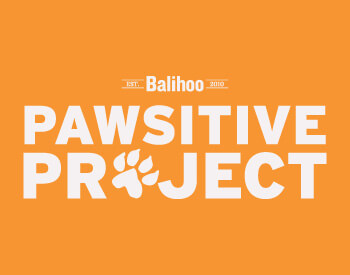Balihoo's Culture of Purpose Engages Millennial Employees
BLOG
BLOG



Purpose does not run counter to profit, and one of the places we increasingly see this prove out is the workplace.
Balihoo has made employee engagement around purpose the centerpiece of its corporate culture. The ad tech startup, which provides local marketing automation software, draws heavily on the millennial generation for its work force. Nearly 85 percent of its 100 employees belong to this demographic.
Our research at Oliver Russell (to be published next week) indicates that the positive social actions of an employer are a key attraction and primary motivator for millennials, and Balihoo’s real-world implementation bears this out.
"Look, I'm a business guy. I've seen the results of our program, and I know it's got real ROI"
–Pete Gombert, Balihoo founder and chairman
Balihoo’s take on corporate social responsibility is to foster a workplace program of explicit social impact. In large part because of this and other progressive practices, Outside magazine, Men’s Health, Forbes and Gartner, Inc., have recognized Balihoo as one of the best places to work in the nation.
This doesn’t happen by accident. But neither does it result from executive fiat either, says Balihoo founder and chairman Pete Gombert.
“Culture has to be organic. It can’t be forced. The people have to make it happen,” he said.
"The people have to make it happen"
Balihoo’s culture development tracks the progression of Gombert’s business thinking. During his career, the Balihoo founder says his philosophy has moved beyond a “Friedmanesque transaction model” of wealth building to creating a business organism that operates in a larger community with responsibilities beyond profit maximization.
He says the return on investment for Balihoo is a trifecta: enhanced recruiting abilities, increased employee retention, and workplace fulfillment that boosts productivity.
“Recruiting is one of the most expensive and important things we do,” said Gombert. “There’s no doubt in my mind that our culture of employee engagement has improved our ability to recruit nationally, and we get inquiries from the kind of people we want to hire, it’s somewhat self-selecting.”

Here’s the Balihoo program:
The Pawsitive Project gives each employee 48 hours of time each year to volunteer for a cause they find motivating. This isn’t mandated, but it has become an explicit part of the values system at Balihoo. When employees use their volunteer time, they can volunteer to share a presentation on it with their co-workers during all-company meetings. For every eight hours of volunteer time accrued at the company, a paw decal is placed on a prominent wall in the office – the name “pawsitive” derives from the positive aspects of the program, plus the company’s love of dogs, many of which can be found lolling in the workplace.
Balihoo also created a special experiential service fund and loads it with $5,000 annually. These funds are available to all employees, who apply to a committee for funding of their good works. Balihoo people have used these funds for travel to Southeast Asia to build wheelchairs and to teach English in South America, among others.

In addition, the company produces one major fundraiser in the community each year. This past year, it was “Steampact,” a theme that combines “steampunk” and “impact” with the aim to raise awareness of giving in millennials in the community. The sellout event drew nearly 450 people and raised $50,000 for Family Advocates, an organization that provides trained, volunteer advocates for abused and neglected children.
Like the infomercials say, “Wait, there’s more.” One night every month, a team from Balihoo cooks dinner at the Ronald McDonald House of Idaho. And the company is also launching a new product donation program to gift its local marketing automation software to national nonprofit organizations with local chapters.
It’s important to note that Balihoo is a successful tech startup with major venture capital funding, which means it operates in a highly competitive marketplace with professional investors who are definitely looking for a financial return.
“Look, I’m a business guy. I’ve seen the results of our program, and I know it’s got real ROI,” says Gombert. “This element of purpose has become foundational to our company, something we all see as a real asset. Doing good and doing well do not run counter to one another, they are integral.”
Blog
Millennials are moving and shaking up the workplace—but why? What motivates this generation?
Blog
Here's a list of questions to consider before starting an employee volunteer program.
Blog
A CSR partnership between HP and Kiva enables employees to invest in microentrepreneurs.